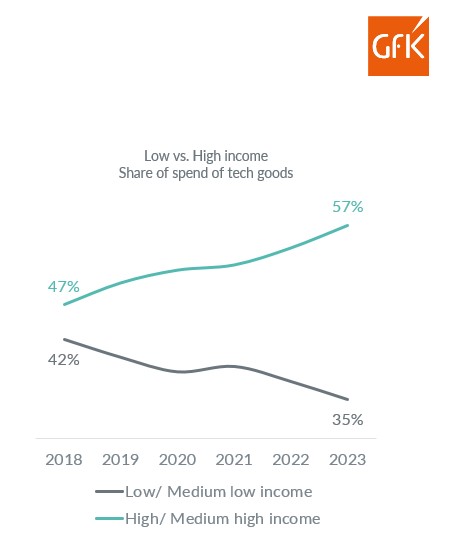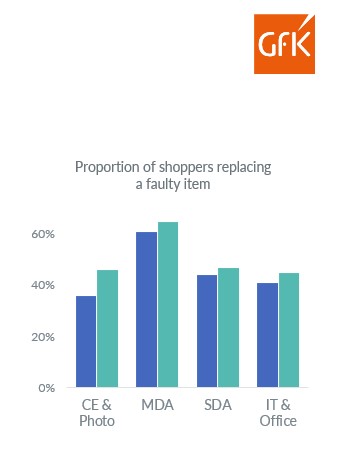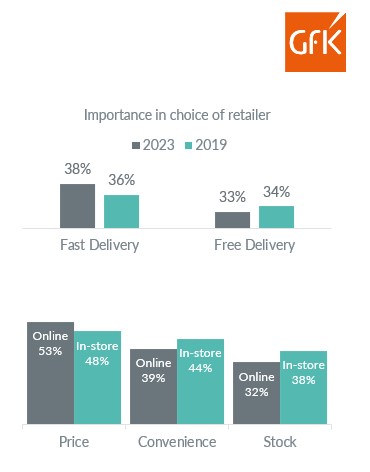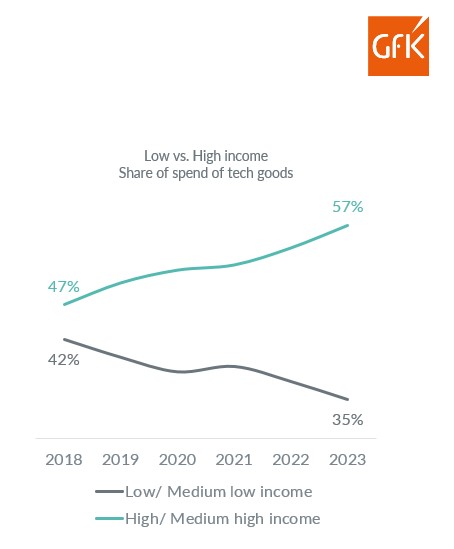How to differentiate and inspire in a polarised market
The gap between those who can afford to buy and those who cannot is deepening. Spending power has shrunk for millions of people as prices and interest rates remain high and servicing mortgages and loans claim a bigger share of monthly outgoings. As a result, lower-income shoppers have slowed their spending rate. In 2018, mid-to-high earners accounted for 42% of sales; in 2023 it was up to 57%. People are also buying less. Almost half of shoppers (47%) now prefer to own fewer higher-quality items and nearly the same proportion (46%) are prepared to pay more for products that make their life easier. What strategies can retailers adopt to help differentiate their offers and inspire shoppers to choose their products?

Focus on products that deliver relevant benefits
Despite having less disposable income, people spent the same on Tech & Durables in 2023 than in 2022 and 13% more than five years ago. However, replacement cycles are extending as people only buy when they must, and fewer buy extra items. In addition, although there was more sales promotional activity last year, demand was still down compared to 2022. This suggests that consumers need more than price drops to convince them to part with their cash.
When looking at the products that are enjoying sales increases, it is those that deliver financial or energy savings, health and wellbeing benefits, home storage solutions, and pampering and indulgence. For instance, air fryers and electric blankets, blood pressure monitors and air purifiers, filing cabinets, wardrobes and shoe storage, premium hair dryers, light therapy and fully automatic coffee machines. Retailers know it is essential to have your finger on the pulse of current sales trends. This allows them to identify what is selling and adapt portfolio and promotions fast to maximise the opportunities.

Shopping must be seamless
Shoppers expect a seamless omnichannel experience. 48% say retailer websites are the most important online touchpoint for them, although this is down from 52% in 2021. The opinions of other shoppers expressed on social media are becoming more important at 14% (up from 12% in 2021) as online and product reviews and manufacturer websites lose their influence. However, personal advice from friends and family is still the top place to look for product recommendations when it comes to making the final choice. In the UK we are more likely to be influenced by our nearest and dearest than in any other European country.
Differentiate to thrive
Understanding your audience, their purchase journey, and meeting their differing needs is key to attracting and converting shoppers in a challenging market where purchase journeys are shrinking. Today, retailers need to offer more than an attractive price to win customers – experience is key and one way to differentiate in a crowded market. For online buyers, fast delivery is becoming more important than free delivery, but for both online and offline shoppers, convenience is essential. Remember, one-third of shoppers are passive when it comes to recommending a retailer so inspiring people with the right shopping experience and converting them to promoters is key to growing share and strengthening loyalty.

At GfK we track and analyse trends as they emerge and provide guidance on how to maximise them. It has never been more important to monitor the market.




